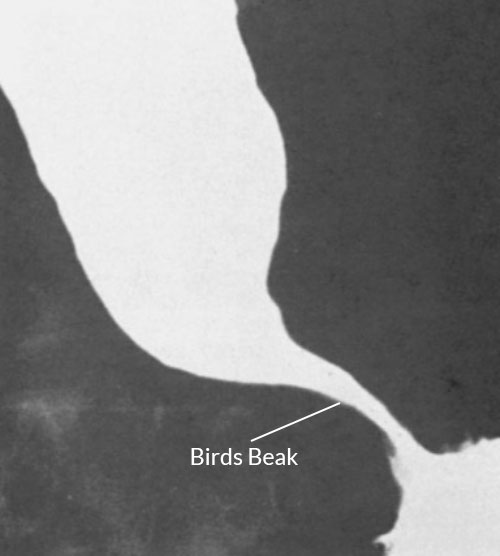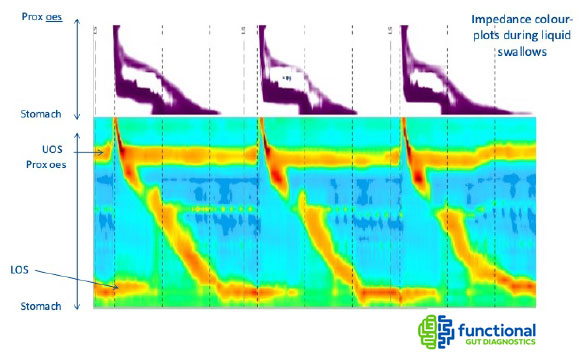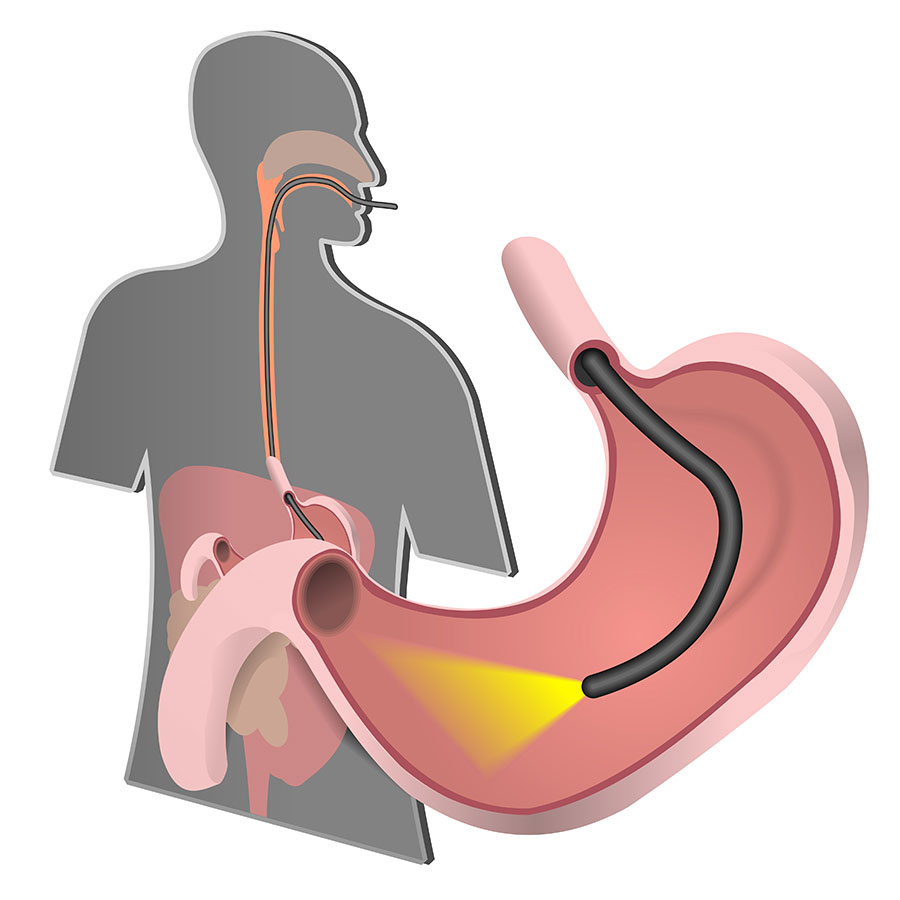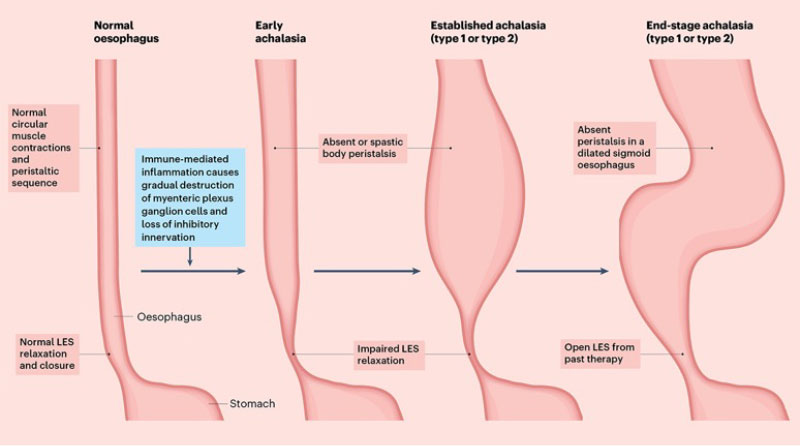"I only received a correct diagnosis following…consultation with a gastroenterologist who was familiar with achalasia"
How is Achalasia diagnosed?
Because achalasia is rare, it is not likely that your GP will have had much experience at dealing with the condition. Swallowing problems can have a number of different causes. Swallowing can be affected by stress and tension so it is important to distinguish between general tension that causes swallowing problems rather than a condition like achalasia that may be an underlying cause of some anxiety and stress around the process of eating food. Having achalasia, when a person wants to eat and swallow normally but the food sticks in the oesophagus, is different from an eating disorder like anorexia.
A diagnosis of achalasia depends on a series of tests normally given by a gastroenterologist in a specialist Upper GI (Upper Gastrointestional tract) clinic in a hospital.
Barium swallow test

Manometry
With manometry, a thin and flexible tube that contains pressure sensors is passed through your nose and, normally, down into your stomach. Your throat and/or nose will be numbed with a spray or gel. Once the tube is in your oesophagus, you will then be asked to drink small sips of water and/or eat some food. This then measures the pressure at set intervals as the bolus (a portion of undigested food) travels down towards your stomach.
Modern high resolution equipment is likely to provide much more information to help achieve a detailed diagnosis of where and how the muscles are working.
A manometry chart shows, in different colours, the pressures at different points from the throat (at the top of the chart) to the stomach (at the bottom) on the vertical axis; the timing of the process runs from left to right. In a normally-operating healthy oesophagus the line of greater pressure will be seen at the top of the chart running diagonally down to the bottom

It is possible to measure the effect when different ‘challenges’ are undertaken. Examples of these challenges include trying to drink water rapidly, or eating food of varying consistency ( marshmallow, for instance). This can be helpful for identifying problems that occur only in particular circumstances.
At some centres, a device called EndoFLIP is used that measures and presents a graphic image of the volume of the oesophagus to set alongside the pressure measurements.
Endoscopy
An endoscope is a miniature camera on a flexible tube that is passed through your throat and oesophagus and into your stomach to provide images that will normally reveal signs of a physical cause of swallowing or other issues like inflammation. An endoscopy can reveal conditions like Barrett’s Oesophagus, ulcers, inflammation or strictures. The device can also take biopsies for analysis.
The endoscopy might detect a tight LOS, a dilated or ‘baggy’ oesophagus, or undigested food residue. The test is important to confirm or disprove other causes of obstruction, but will often not be sufficient in itself to diagnose achalasia because it does not analyse the swallowing process.
Endoscopy is often performed under sedation, meaning that you should have somebody to accompany you home afterwards. Some endoscopies are undertaken with a throat spray rather than under sedation.

Trans nasal endoscopy
24-hour pH monitoring
Sometimes it can be helpful to conduct a 24-hour acid monitoring test. A thin tube is inserted through your nose at the hospital. This process takes about an hour. The tube is attached to a monitor that you wear whilst you continue all your normal daily activities, keeping a diary of what you eat and drink. You then return to the hospital 24 hours later for removal of the tube and for the data in the monitoring device to be downloaded for analysis.
Need help? Call the helpline on 0300 772 7795 or email admin@achalasia-action.org
Need help?
Call the helpline on 0300 772 7795
or email
admin@achalasia-action.org
Types of Achalasia
It is not always very helpful to be over-concerned about what type of achalasia you have, because each case is liable to be different. You may not fit easily into one specific category rather than another, and the classifications can be confusing. Sometimes the condition develops from one type into another according to the stage of the disease. There is a school of thought amongst some doctors that the type of achalasia will determine what treatment is likely to be effective.

Stages of Achalasia (image courtesy of Nature Reviews Disease Primers )
Type 1 achalasia means that there is no peristalsis at all and the LOS does not relax. The muscles do not work at all, or very weakly. This type often occurs when achalasia is more established and can sometimes develop from types 2 and 3.
Type 2 achalasia also involves the LOS not relaxing. Some or all of the peristaltic muscles do react but in an ineffective or uncoordinated manner.
Type 3 also involves the LOS not relaxing, but the exaggerated activity of the muscles create chest pain with high amplitude spikes and uncoordinated, premature, vigorous contractions.
The pH score runs from 1 (very strong acid) to 14 (very strong alkali). Strong acid (a pH score of 1.5-3.5) is naturally present in your stomach to assist the normal digestive processes, but some parts of your digestion normally produce bile (pH score of 7-8). Sometimes the acid readings can be the result of reflux that comes from the stomach; sometimes they reflect the fermentation of food residue that remains in the oesophagus, or potentially from other parts of your digestive system.